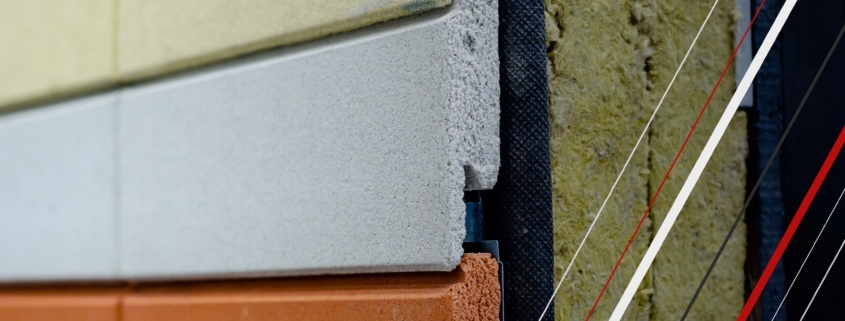Exterior Insulation Finishing Systems (EIFS)
An Exterior Insulation Finishing System (EIFS) can also be known as Exterior Wall Insulation Systems (EWI) or External Thermal Insulation Composite Systems (ETICS). It is a type of cladding system that can provide exterior walls with an insulated finish surface and waterproofing in an integrated composite material system.
These systems can be defined as an ideal energy efficient thermal wrapping or façade insulation, which is applied to the exterior surfaces of a building. It is then finished with a long-life and protective wall coating that can be installed on any type of construction.
Versions of EIFS
Barrier EIFS – A barrier EIFS, which can also be known as traditional or conventional EIFS, can be applied to a solid wall (brick, blockwork, pre-cast panels etc).
EIFS with drainage – This is a type of barrier EIFS, to which a water drainage capability can be added. This is usually done for wood structures.
How do EIFS save energy?
It can be argued that EIFS are unique as they are the best exterior cladding system that offers thermal control, as well as adding improved energy efficiency to the home. EIFS with drainage can help to reduce a household’s carbon footprint and keep energy costs down.
These exterior cladding systems can help to improve the airtightness of the building envelope, which is one of the most critical elements of energy-efficient home construction.
However, most insulation boards used in EIFS is either made from expanded polystyrene or polymer-modified systems. Both products are synthetic and can come with some environmental drawbacks. Polystyrene degrades slowly, and when it is properly disposed of, the foam can leach chemicals which can harm water sources. Also, many recycling centres will not accept expanded polystyrene as it is a relatively low-value product. Therefore, it can be incredibly difficult to get rid of.
Are EIFS healthy?
When properly installed, EIFS do not have any health consequences. However, improper installation techniques and older variations of EIFS that did not include specific drainage systems have been proven to lead to serious mould growth, which can have impacts on the health of the occupants of the building. The mould growth can also damage the structure of the building, which can lead to expensive repairs.
According to the National Association of Home Builders (NAHB), homes with barrier EIFS are “prone to moisture intrusion problems even when properly constructed according to industry standards. Unlike other cladding types, the design of barrier EIFS does not allow the draining of water that gets behind the system, either through building components (openings in the building envelope for doors, windows, etc.) or when sealants break down or crack. Depending upon the climate and the wall assembly’s overall make-up, the wall may not readily dry out. Sustained elevated levels of moisture without adequate drying will cause rot or decay to sheathing and framing.”

